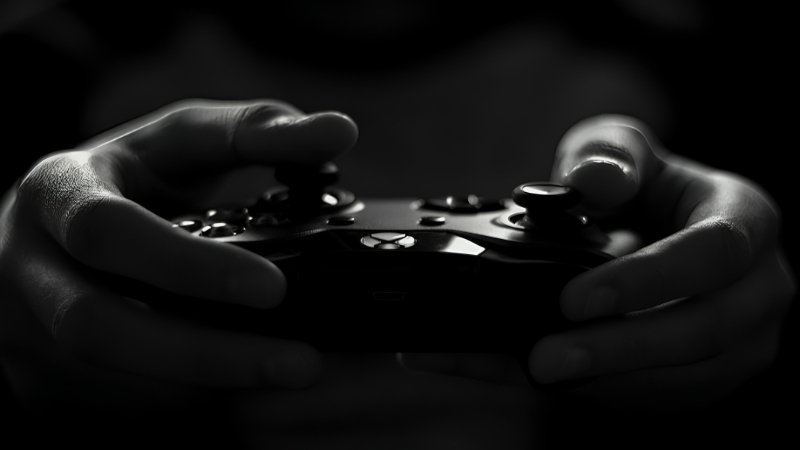You can expect your laptop, handheld, or mobile device’s battery to suffer when you launch a high-intensity game. And not everything in that drain is necessary. Games are highly subjective to the settings, as many of the power losses in gameplay are directly attributable to factors such as graphics, frame rates, resolution, and lighting.
That means, with a few adjustments to the correct settings, you will be able to get a lot more out of your battery even in intensive use.
The important thing is to know what settings have the most significant impact. We can analyze how these choices affect power use, the trade-offs you must make, and how to balance performance with lifespan.
Why the Environment is More Important than Hardware
Battery drainage seems to depend on your device’s battery capacity, its internal components, and the game’s requirements.
Environments act like levers that can either increase or decrease battery drain. A game running on ultra graphics and uncapped frame rates places both the CPU and the GPU under full workload, producing heat, demanding significant current, and causing cooling systems to work harder.
Reduced settings minimize computations. The number of shader calculations is reduced, models are made simpler, and shadows are drawn less finely. Any reduction saves work, and less heat and power are used.
Brightness, refresh rate, and resolution are directly proportional to the number of pixels that your display must energize per second. One of the most energy-intensive components is displays. Significant savings can result from even minor reductions in this aspect.
Likewise, many modern devices offer the ability to scale dynamically, increasing or decreasing the clock speed of GPUs or the size of cores when full power is not required.
Nonetheless, these systems remain sensitive to the aggressive abuse of hardware. An environment where peak performance is expected at all times precludes any possibility of easing off.
Key Settings That Drain Battery (and How to Tame Them)
Effects and Quality of Graphics
Rich texture resolutions, ambient occlusion, volumetric lighting, motion blur, and other advanced post-processing effects all have a hidden power cost. Disabling optional effects or turning them down can reduce the load on a GPU significantly and may not even ruin the visual quality.
Frame Rate Caps and Refresh Rates
Frame rate limiting is one of the best levers. In the case of your 60 Hz display, the marginal returns of pushing game frames to 120 fps or more tend to be lower, and there is additional battery consumption. Limiting it to 60 or 90 frames per second causes a significant drop in the load on the GPU.
On mobile devices or laptops, it is also helpful to reduce the refresh rate when running on battery power; fewer refresh cycles result in less steady power consumption to the display.
Brightness and Resolution Display
Display exhibitions still consume a significant amount of battery power. Scheduling the brightness to the minimum comfortable level can be useful. In portable games or mobile gaming, most players do not remember the aggressiveness of specific games that are so insistent on brightness to accentuate graphic glitz.
Reduction of resolution (1440p to 1080p or 1080p to 720p) will also consume fewer pixels to render, which will relieve the burden on the graphics card and memory subsystems.
Power Profiles and System Modes
Most devices have performance, balanced, or battery-saving modes. Activation of balanced or saver modes reconfigures system clocks, tricks maximum voltage, and curbs the background idle processes. There are also gaming platforms with per-app optimization, which dynamically adjust power settings according to the intensity of the game.
Background Operations and Network
Games are not isolated entities. Background apps, system services, network traffic, cloud syncing, and push notifications consume power. To reduce strain, you can disable or minimize these tasks—especially network-intensive ones. In InJob Gaming, you can turn off location services, Bluetooth, or airplane mode when you’re not connected to the network.
There are several effective ways to decrease battery consumption while playing mobile games, such as adjusting game settings, optimizing hardware performance, and managing system power plans. Making these small tweaks can significantly extend playtime and improve overall device efficiency.
Real Gains from Small Changes
What is surprising is how much battery life you can regain by adjusting settings—up to 20-30% or more. For example, turning off unnecessary lights, limiting frame rates, and reducing brightness can significantly extend playtime. PCWorld suggests that one of the easiest ways to save battery on a gaming laptop is by turning off RGB lighting and lowering display brightness.
On mobile devices, reducing frame rates or graphic fidelity can boost battery life by 30–40%. On platforms like Steam Deck, players adjust individual game profiles to balance performance and battery conservation, ensuring an optimal gaming experience.
Communities in mobile gaming emphasize that heat poses a significant threat: implementing low settings, minimizing heat operations, and effectively managing resources can lead to reduced battery waste and gradual degradation.
Striking the Right Balance
You do not need to lose all the visual technological flair to conserve battery. The goal is to maintain playability without overtaxing your battery.
Begin by setting the locations of high power cost (frame rate, quality of effects, display brightness) and start with them. Set the quality of optional impacts to the lowest possible, set cap fps to just below the refresh rate of your display, and set resolution to the smallest possible.
Always have power or energy-saving profiles on when you are playing on your mobile or when you are offline. Turn off extraneous connectivity and background jobs when playing games.
Over time, use different settings in various situations: high performance when connected to power, minimal use when on the move. Depending on the game, modify in response to demand. Certain titles, where you can activate the aggressiveness, may be better suited for ultra settings.
See Also: Cloud Computing and Neural Networks: How They Will Affect Future Games
